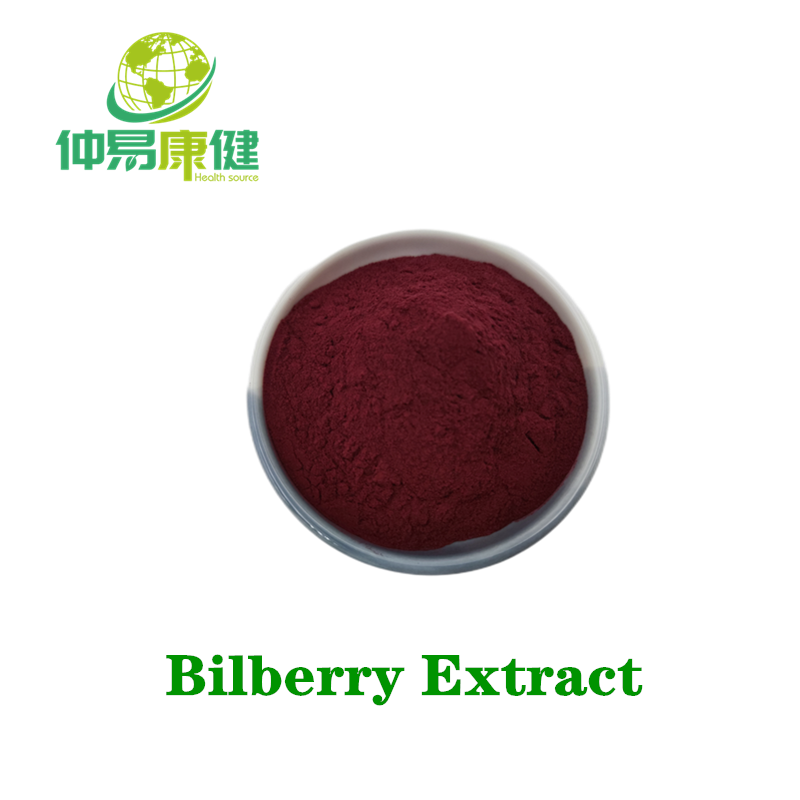Bilberry Extract
Bilberry Extract
Bilberry Extract
- Detail
- Parameters
Bilberry Extract
Latin Name: Vaccinium Myrtillu
Active Ingredient: Anthocyanins
CAS No.: 528-58-5
Test method: TLC
Specifications: 4:1 10:1
Product Description:
Basic infor
Name: Bilberries extract
Other name:accinium vitisidaea
Source:Fruit of bilberry
Latin name:Vaccinium Myrtillus
Ingredient: Anthocyanidins
Specfication : 5%25%36% /10:1 4:1
Test methods:TLC/UV
CAS No.:13306-05-3
Molecular Formula:C15H11O6
Molecular Weight: 287.2437
Specification Anthocyanidins 5%,7%,13% 15%,20%,25% ( by UV)
Anthocyanins(Anthocyanosides )20%,25%,35% (by HPLC)
What is Anthocyanins?
Anthocyanins (also anthocyans; from Greek: ἀνθός (anthos) = flower + κυανός (kyanos) = blue) are water-soluble vacuolar pigments that may appear red, purple, or blue depending on the pH. They belong to a parent class of molecules called flavonoids synthesized via the phenylpropanoid pathway; they are odorless and nearly flavorless, contributing to taste as a moderately astringent sensation. Anthocyanins occur in all tissues of higher plants, including leaves, stems, roots, flowers, and fruits. Anthoxanthins are clear, white to yellow counterparts of anthocyanins occurring in plants. Anthocyanins are derived from anthocyanidins by adding sugApplications:
-DRUG USE: Bilberry fruit was used to treat diarrhea, scurvy, and other conditions. It's very effective in treating diarrhea, menstrual cramps, eye problems, varicose veins,venous insufficiency (a condition in which the veins do not efficiently return blood from the legs to the heart), and other circulatory problems including diabetes.
- FOOD ADDITIVES:With so many healthy functions, bilberry extract is also added to food to strengthen the flavor of food and benefit human health at the same time.
- COSMETICS: Helpful to improve skin situation. It's effective in fading out freckle, wrinkle and making skin smooth.
What is Bilberry?
Bilberries are any of several primarily Eurasian species of low-growing shrubs in the genus Vaccinium (family Ericaceae), bearing edible, nearly black berries. The species most often referred to is Vaccinium myrtillus L., but there are several other closely related species. Bilberries are distinct from blueberries but closely related to them.Bilberry (especially Vaccinium myrtillus) is also known in English by other names including blaeberry /ˈbleɪbɛri/ in Scotland,[1] whortleberry /ˈhwɜːrtəlbɛri/ in southern England,(ground) hurts, whinberry, winberry, windberry, wimberry, myrtle blueberry and fraughan. In several other European languages its name translates as "blueberry", and this may cause confusion with the related plants more usually known as "blueberry" in American English, which are in the separate section Cyanococcus of the genus Vaccinium. The bilberry is native to Europe including the British Isles, while the blueberry is native to North America.
--Bilberry - Wikipedia, the free encyclopedia
